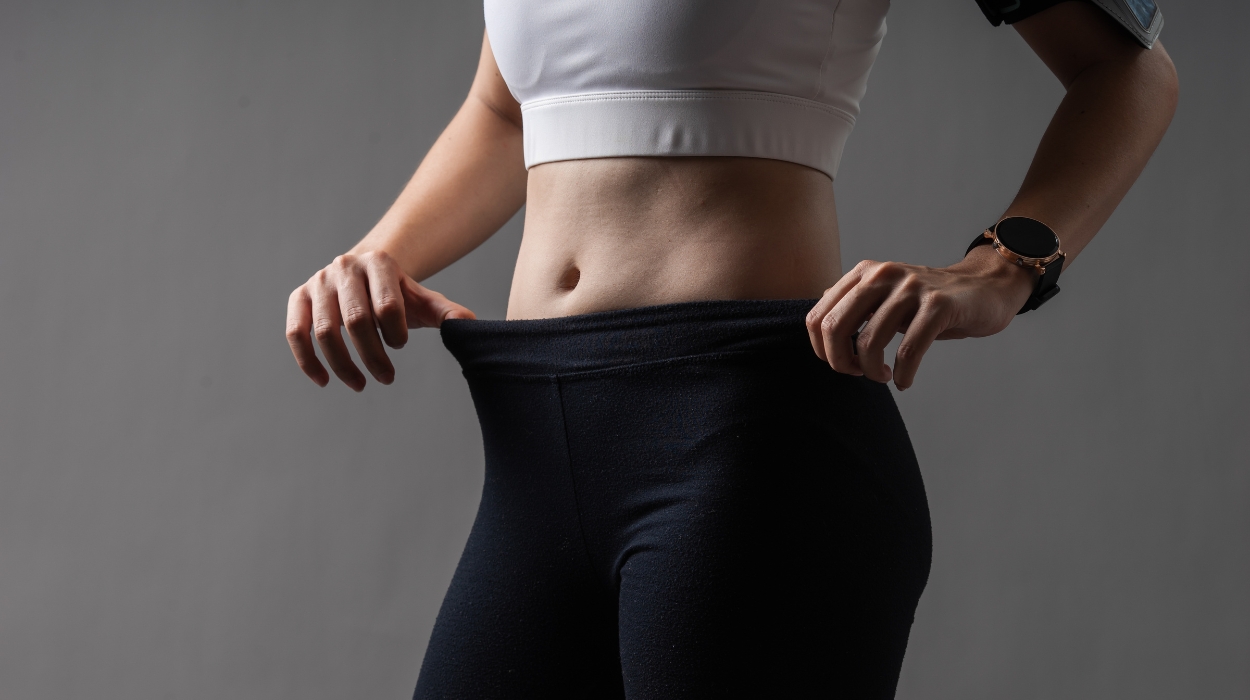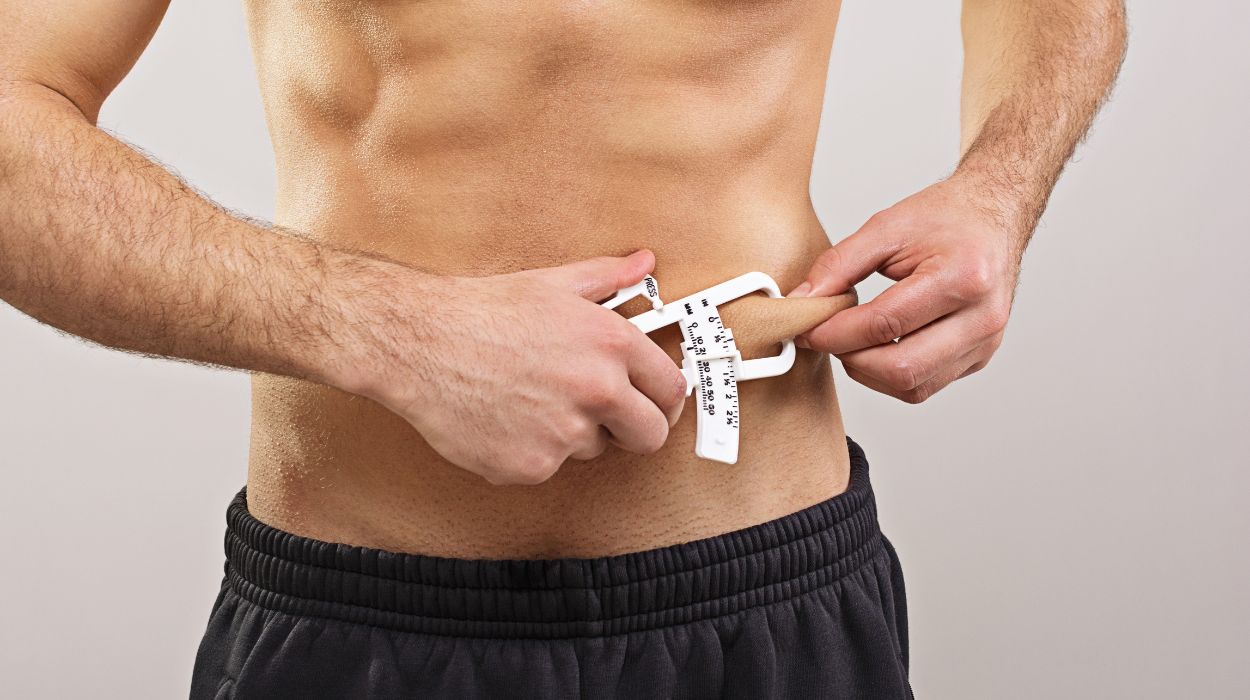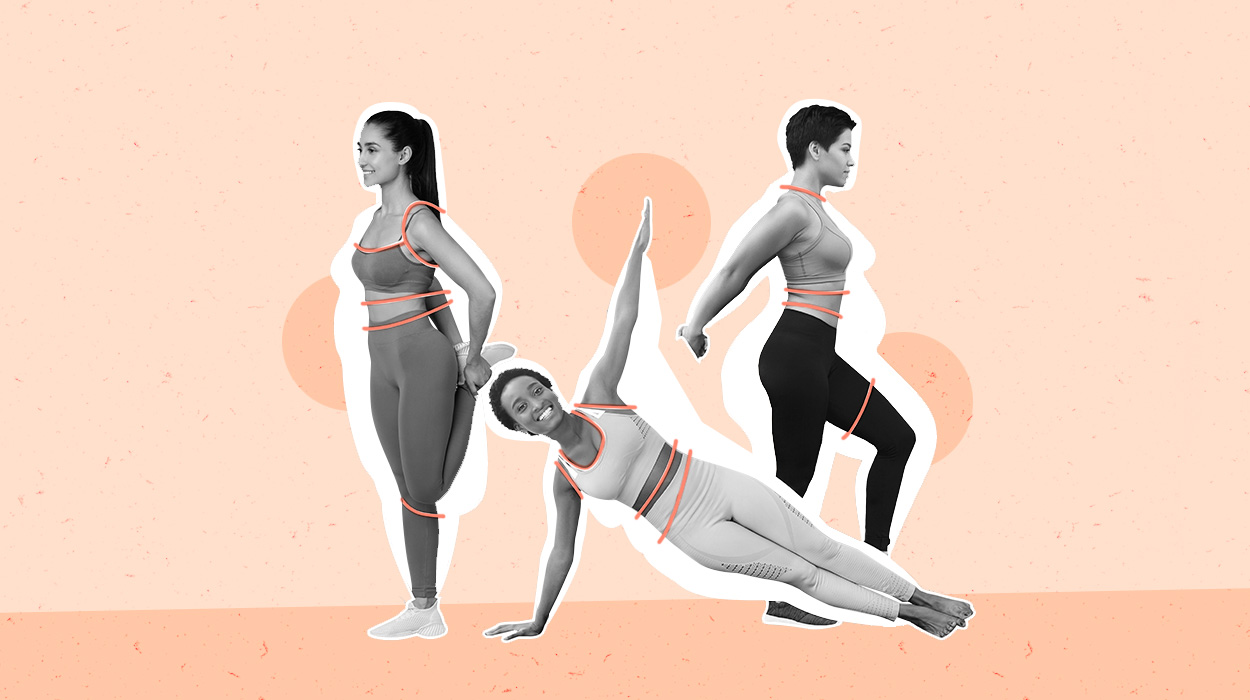People often say they want to lose weight. However, weight loss is not the same as fat loss. Weight is made of various items including your body’s water content, muscle mass, bone mass, and stomach content. Rather than just weight loss, what individuals desire is how to lose body fat without losing muscle.
Research[1] suggests that 25% of the weight lost by dieters is fat-free. In other words, they lose muscle while trying to lose weight, which can pose health risks. Muscle has several health benefits, including strength, boosting immunity, increasing caloric expenditure, regulating blood sugar, controlling inflammation, and preventing unhealthy weight gain. So, preserving muscle mass while shedding those pounds is essential. Read on to learn how to lose fat without losing muscle.
How To Lose Fat Without Losing Muscle
If you want to lose body fat without losing muscle mass, here are seven effective ways to achieve it:
- Eat enough protein.
- Avoid excessive calorie cuts.
- Perform strength training.
- Perform low-impact fasted cardio exe6rcise.
- Practice carb cycling.
- Get enough sleep and rest.
- Consider supplements.
Seven Ways To Lose Fat Without Losing Muscle

If you want to lose fat without losing muscle mass, here are seven effective ways to achieve it.
Eat Enough Protein
Protein intake is crucial to your weight loss journey. If you want to lose fat without losing muscle, you must consume a sufficient amount of protein daily. Studies reveal that an increase in protein intake[2] prevents muscle loss.
Eating protein helps you feel fuller for longer, helps you burn more calories, and preserves muscle mass while on a calorie-restricted diet. To successfully shed weight without losing muscle mass, you must eat an ideal amount of protein every day. Per guidelines men and women between 19 and 30 years old should aim to consume at least 56 grams and 46 grams of protein[3] daily, respectively.
You can meet these requirements by including a source of protein in every meal. Lean protein sources[4] may include lean red meat, poultry, eggs, fish, seafood, nuts, yogurt, milk, tofu, and tempeh.
Avoid Excessive Cutting Back Of Calories
Healthy weight loss requires some degree of a calorie deficit. However, crash diets will do more harm than good. A sudden and excessive drop in your calorie intake can pose certain health risks and make you lose muscle mass.
To tolerate cutting without losing muscle mass, experts suggest a slow but steady approach. Reducing your calorie intake by 500-1,000 calories daily can help you lose a pound or two every week.[5]
Strength Training
Research[6] suggests that exercise coupled with caloric restriction helps prevent muscle loss. Strength training lets you lose body fat, maintain lean muscle mass, and build muscle. Strength training often includes weight lifting, resistance bands and body weight exercises.
If you’re wondering how bodybuilders lose fat without losing muscle mass, strength training is the answer. It goes beyond lifting weights by pushing your strength limits by increasing the weights you lift.
Perform Low-Impact Fasted Cardio Exercise
Cardio exercise, or aerobic exercise, increases your heart rate. While cardio is essential to your weight loss plan, your workouts can determine whether you will maintain muscle. Low-impact cardio exercises include walking on a treadmill, light jogging, swimming, slowly lifting weights, and cycling.
Fasted cardio means performing these exercises on an empty stomach or when your body has nothing to digest. Exercising when your body is in a fasting state reduces your insulin levels[7] and makes your body burn body fat for energy.[8] Hence, you shed excess fat while preserving muscle tissue.
Practice Carb Cycling
Carb cycling means consuming more calories on training days and fewer calories on rest days. It allows your body and muscles to recover and refuel their energy reserves in preparation for your next training day. It also increases insulin sensitivity and helps you burn more fat.
Generally, we recommend consuming 20 to 100 grams of carbs per day to lose weight. Recommended healthy carbs include fruits, vegetables, legumes, potatoes, and whole grains like oats, wheat, and rice.
Get Enough Sleep and Rest
Rest and sleep are crucial to maintaining lean body mass. They help you recover from intensive workouts and stay consistent with your caloric deficit. Try to have a day off or perform light-intensity exercises like walking, dancing, cycling, or swimming.
Ensure you get at least seven to nine hours of sleep at night. One study[9] examined the influence of sleep on weight loss while on a calorie-restricted diet and found sleep restriction increases muscle loss and levels of the hunger hormone ghrelin.
Consider Supplements
Taking supplements prevents nutrient deficiencies, boosts metabolism, and aids weight loss. Taking a protein supplement is a way to avoid burning fat and muscle. It helps you effectively recover and preserve muscle mass after exercise.
Benefits Of Achieving Fat Loss Without Losing Muscle
The health benefits of cutting without losing muscle are numerous. A few of them include the following:
- Increased Strength: Losing fat while maintaining lean muscle mass makes you stronger allowing you to carry out activities more easily.
- Increased Metabolism: Maintaining muscle mass can boost your metabolism and aid in burning fat. Enhanced metabolism also helps prevent obesity-related diseases like type 2 diabetes, cardiovascular disease, and certain cancers.
- Improved Insulin Sensitivity: Muscle mass increases insulin sensitivity helping to regulate blood glucose levels effectively.
- Enhanced Cognition: Exercise triggers the release of endorphins, which boosts mood, prevents depression, and reduces stress levels. These all work together to boost cognitive function.
- Healthy Aging: Having a body with low fat and high muscle mass is fulfilling. It makes you fit, stronger, healthier, independent, vibrant, and youthful.
How Fast Can You Lose Fat Without Losing Muscle?
The rate at which you can shed weight without muscle loss varies. It depends on factors including your initial body weight, genetics, basal metabolic rate, gender, sleep, dietary habits, and exercise routine.
According to the Centers for Disease Control and Prevention,[10] losing weight steadily,around one to two pounds per week, helps you keep the weight off. Remember that rapid weight loss may result in muscle loss, and that’s what you want to prevent.
How To Know If You’re Losing Fat Or Muscle?

Most scales can tell you if you’re losing weight, but they cannot reveal whether you’re losing weight from fat or muscle. The goal of embarking on a weight loss journey is to lose fat without losing muscle. But how do you know if you are losing weight the right way? Here’s how to tell if you’re cutting without losing muscle or not:
Use A Body Fat Scale
Body fat scales measure the percentage of muscle and fat you have. They provide more accurate information about your body composition and help you track your progress.
Use Skinfold Calipers
Skinfold calipers are an instrument that measures the thickness of body fat. It involves using the caliper to pinch the skin and subcutaneous fat in several places on your body to estimate the body fat percentage. Using skinfold calipers requires a high level of skill and accuracy.
So, if your body fat percentage remains the same or has very minimal changes as you track your progress, you might be losing muscle and not fat.
Less Strength During Workouts
If you feel weaker when lifting weights, or completing additional repetitions, you are most likely shedding muscle and not fat.
You may also see that your workouts are not progressing. That is, you cannot lift more weights than you have been lifting or go beyond what you’ve always endured. This requires a review of your weight loss routine.
Low Energy Levels
If it feels challenging to perform your normal daily activities or you feel fatigued, you may be losing muscle tissue.[11] You may not be eating enough calories, or could be overtraining. Muscle improves performance, so if you’re experiencing the opposite, it’s time to evaluate your weight loss plan.
Rapid Weight Loss
Rapid weight loss is not good for your muscle mass. Weight loss should be gradual, requiring patience. Overall, people should aim to lose one to two pounds a week.
Take Progress Pictures
Photos are an easy way to know if you’re losing weight correctly. If you are cutting without losing muscle, you’ll notice your waist and hips are smaller. You will look toned with a slimmer physique.
In contrast, if you notice a loss of muscle definition, you are losing lean muscle.
Measurements
Measuring and monitoring the inches lost from your waist and hips is another way to know if you are losing fat. You may also notice how well your clothes fit on your waist and hips.
Losing Fat Without Losing Muscle: Most Common Mistakes
Several people make mistakes when trying to shed some pounds. Some of these common mistakes include:
- Skipping meals.
- Drastically cutting down on calories.
- Consuming too many calories.
- Performing too much cardio.
- Ignoring or not doing enough strength training.
- Not getting enough sleep.
- Not managing stress levels.
- Having unrealistic expectations.
- Not being consistent with their dietary or exercise regimen.
When To Talk With A Pro
Healthcare professionals such as nutritionists and physical therapists should be consulted for better recommendations for your health and fitness goals. These professionals can help you if you are unsure how to change your eating habits effectively. This is beneficial since you can get a proper diet plan that does not affect your health, especially if you have particular nutritional needs or have an underlying medical condition. On the other hand, having a personal trainer can help you follow a set exercise routine that aligns well with your health and level of fitness. Suppose it’s impossible to work with these professionals; you can partner up with your friend. You can push each other to eat and train well toward your fitness objectives.
Conclusion
The goal of a successful weight loss journey is healthy fat loss. Shedding excess fat while preserving muscle requires a calorie-deficit diet, regular exercise, and adequate sleep. Crash diets and excessive exercise can result in loss of muscle mass instead of fat mass. So, if you’re wondering how to lose fat without losing muscle, focus on losing weight slowly and increasing muscle mass.
Frequently Asked Questions
Bodybuilders focus on muscle mass through a caloric deficit diet, lifting heavy weights, performing low-rep exercises, and weight training. The muscle tissue increases their metabolism, which allows them to burn more calories.
Obesity is a risk factor for chronic diseases like heart disease, type 2 disease, and cancer. Shedding fat and gaining muscle prevents obesity and reduces your risk of developing chronic illnesses. Looking thin makes you physically and mentally fit.
Protein is a crucial nutrient on your weight loss journey. Protein builds, repairs, and preserves muscle mass. Protein-rich foods boost satiety and reduce appetite. Including carbs and drinking enough water is also important.
Avoid losing weight from muscle by working out two to three times weekly and consuming adequate nutrition. Be careful, not to overdo cardio or neglect strength training.
Yes, building muscle can help you burn more fat. Muscle uses up more calories at rest than fat does. So, your body uses up more fat to produce energy.
The amount of weight you can lose depends on many factors. However, a safe and general approach is to aim at losing one to two pounds a week. Losing weight rapidly is not a safe and healthy way to lose weight.
You need to burn 500 to 1,000 calories more than you consume daily to lose one to two pounds weekly. You can achieve this through a low-calorie diet and consistent exercise, particularly strength training.
Yes, sleep can help you lose weight. Adequate sleep helps your body recover from intense workouts and rebuild muscle. Also, when you sleep, your body gets into a ‘fasted’ state and burns more calories and fat stores.
 Expert's opinion
Expert's opinion
